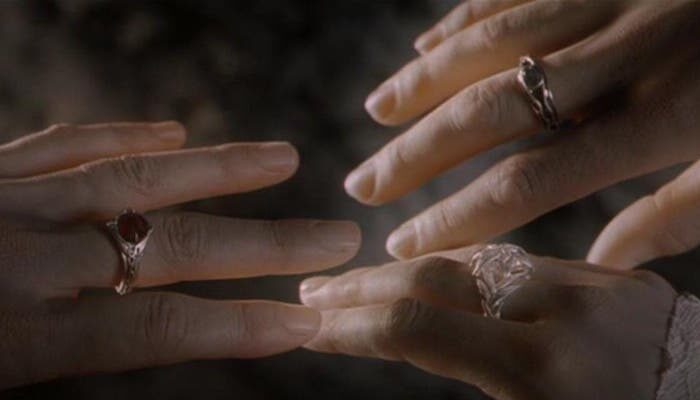TV Review: THE LORD OF THE RINGS: THE RINGS OF POWER: Season 1, Episodes 3-4 [Prime Video]
The Lord of the Rings: The Rings of Power: Adar and The Great Wave
Prime Video‘s The Lord of the Rings: The Rings of Power: Season 1, Episode 3: Adar and Episode 4: The Great Wave TV Show Review.
These episodes find the narrative of The Lord of the Rings: The Rings of Power converging nicely toward the eventual proving ground of Middle Earth, despite the compression of the timeline found in the books.
The remarkably good measure of pacing and cross-cutting of what is essentially four parallel plots helps to ground the necessary grandeur of the production. The scenarios primarily explored and expanded upon in these episodes include: Númenor; the Southland village of Hordern and its watchtower; Moria, known as Khazad-dûm to the Dwarves; and the Harfoots’ trek across the northern wilderness of Eriador.
These two episodes offer more clarity with respect to the events. All due attention is paid to the characters that have appeared thus far (with only a few new ones of note). They attain more depth and purpose as the story continues to shape up. Some of the arcane devices introduced in earlier episodes have better context here. For example, Morgoth’s icon causing Galadriel so much foreboding is revealed as a location — the future region of Mordor. Another is the sword Theo had discovered in his deserted Southland village, which remains as obscure to the audience as it is coveted by the pillaging Orcs.
Adar
The writers might have fabricated an entirely new character for the series. But many others have speculated that this is another rendition of Sauron, as a better fit into the streamlined story line altered from the books. (Still others, however, have posited that Sauron is among the present characters.) Even the Orcs in his service address this entity in Elvish — which Orcs rarely use, if ever — as ‘Adar,’ or ‘Father.’ Interestingly, we only get a glimpse, and a hazy one, at the end of this episode.
Adar primarily explores themes of loyalty, xenophobia, bargains for trust, challenging the status quo, and factions that arise as a result. Each subplot implies high stakes dependent upon the decisions made: Queen Míriel and Galadriel for Númenor; the elf Arondir and human Bronwyn in the Southland; Elrond and Prince Durin for Khazad-dûm; the Harfoot nomads and the mysterious stranger with emerging magical abilities.
The Great Wave
This episode sets the stage for consequences of previous decisions, and it’s chock-full of portents. The ‘Great Wave’ itself haunts Míriel’s dreams and overwhelms Galadriel’s vision when she bonds with the palantír seeing stone. (Fans will recall that none of the seven palantírs can be forced to produce false visions, but presentation can be subject to the user’s will, if powerful enough.)
Another icon, this one well known, into historical context lifted directly from the book: the Dwarves’ initial discovery of the precious metal mithril and its full value realized, none too soon and not without cost — the collapse of the tunnel and all miners escaping, just barely, with their lives. How much can be attributed to the Dwarf Queen Disa “singing to the mountain,” as she puts it, is dubious, but the beauty of the song is its own reward. And King Durin III gets the hint and commands that the lode, along with its dangers, remain buried under tons of rock (until he takes one of the Seven).
But likely the most fearsome harbinger is Adar himself, finally brought into the open and his character explored, with a few more hints at whom he might represent. But he’s still something of an enigma, soft-spoken, genteel, and (so it seems) introspective. His frequent use of Elvish, apparent tenderness when putting a rank-and-file Orc out its misery, and the freezing diplomacy with which he releases Arondir to convey a message to rebellious villagers, points to a very likely candidate.
Conclusion
These two episodes of The Rings of Power effectively converges the complex story and clarifies the narrative. Omissions and additions to Tolkein’s written canon for the sake of simplicity are obvious, the events relative to Númenor’s fate being most obvious. But these changes are inventive, logical and solid, with no compromises to theme. and continues to pique interest.
Leave your thoughts on this The Lord of the Rings: The Rings of Power: Adar review, on this The Lord of the Rings: The Rings of Power: The Great Wave review, and these episodes of The Lord of the Rings: The Rings of Power below in the comments section. Readers seeking to support this type of content can visit our Patreon Page and become one of FilmBook’s patrons. Readers seeking more The Lord of the Rings: The Rings of Power can visit our The Lord of the Rings: The Rings of Power Page and our The Lord of the Rings Facebook Page. Readers seeking more Amazon Prime Video articles can visit our Amazon Prime Video Page and our Amazon Prime Video Facebook Page. Readers seeking more TV show reviews can visit our TV Show Review Page, our TV Show Review Twitter Page, and our TV Show Review Facebook Page.
Want up-to-the-minute notification? FilmBook staff members publish articles by Email, Twitter, Facebook, Instagram, Tumblr, Pinterest, Reddit, Telegram, and Flipboard.
Related Articles
FilmBook's Newsletter
Subscribe to FilmBook’s Daily Newsletter for the latest news!













